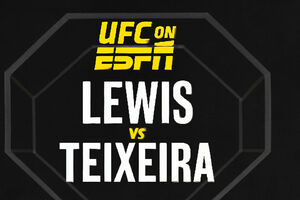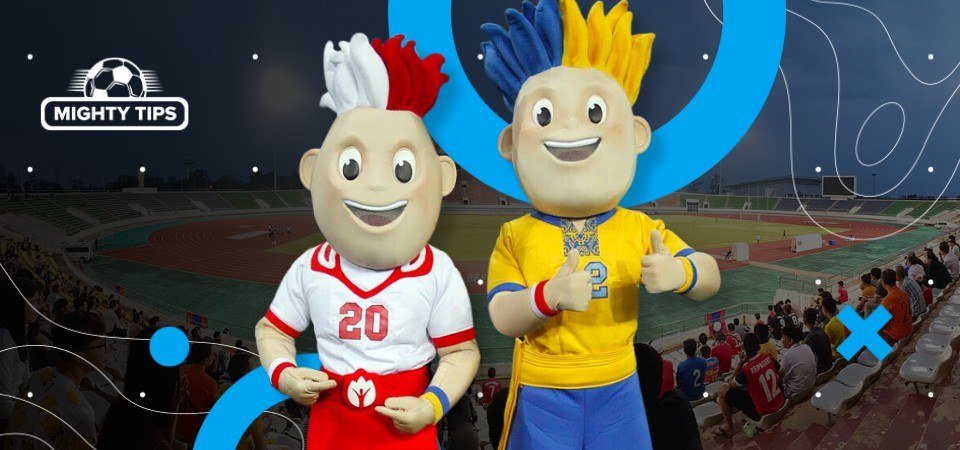
UFC on ESPN 70: Lewis vs. Teixeira – Predictions and betting odds
Over the years, we’ve seen various UEFA euro mascots. The UEFA European Championship usually features euro mascots to create a sense of identity.
Football mascots generally promote unity and excitement among fans, especially younger ones.
The upcoming EURO 2024 has had votes from UEFA.com users and schoolchildren across Europe to name the 2024 euro cup mascot, Albärt.
In this article, we’re going to journey through the UEFA Euro mascots since 1980, looking at what each represents.
The Euro 2024 Albärt, chosen through a vote by UEFA users and schoolchildren, captured the hearts of football fans.
Albärt euro 2024 is a charming teddy bear. He embodies the spirit of the tournament and draws inspiration from past UEFA Euro mascots like Kinas, Rabbit, Goaliath, and Berni.
Albärt made a special appearance at a primary school in Gelsenkirchen prior to his presentation at the Germany vs. Colombia friendly match on June 20, 2023. This was an attempt to ignite enthusiasm among schoolchildren, showcasing the inclusive nature of football and its values.
Italy’s 1980 mascot, Pinocchio, symbolized the nation’s rich cultural heritage and added whimsy to the UEFA European Football Championship, reflecting Italy’s love for storytelling and folklore.
His presence embodied the spirit of unity and excitement among fans during the tournament.
We recall a colourful history of UEFA EURO mascots, dating back to Pinocchio in 1980 - http://t.co/buOc7huAqR pic.twitter.com/J7Px2iWFef
— UEFA EURO 2024 (@EURO2024) October 30, 2013
Peno was the mascot in 1984. He’s one of the most symbolic. He depicted a spirited rooster donning the iconic French football attire, including boots and a ball.
This was a symbol of the nation’s hosting role. The colloquial French term for “penalty” inspired the name Peno.
He became a talisman for Les Bleus, who triumphed in the tournament, securing victory on their own turf.
"Peno", mascota de la Eurocopa 1984 disputada en Francia y con victoria de los locales bajo la batuta de Michel Platini #france #euro #eurocopa #euro1984 #futbol #futbolretro #football #classicfootball #vintage pic.twitter.com/l21QBIhyqY
— vintage_futbol_uy (@vintagefutboluy) February 18, 2024
The 1988 euro mascot, Berni, was a rabbit. He was adorned with two sweatbands on his wrists and one on his head.
Berni was named after the city of Berni, which was then the location of UEFA headquarters.
USSR manager Valeriy Lobanovskyi with Berni, Euro 1988 official mascot before final match against #Holland in #Munich
— سكوريزو أرشي٠كرة القدم (@Scoreezo) February 24, 2017
_#Legend #Ukraine pic.twitter.com/HbD1OOulNF
The euro 1992 still saw a run of the rabbit mascot. Ironically, in 1992, the mascot was a rabbit named Rabbit.
Rabbit, like the 1988 mascot Berni, wore two sweat bands on both wrists and his head.
I think this rabbit mascot of the Euro 1992 in Sweden was called Berni... #Berni #UEFA #Euro1992 #Sweden1992 pic.twitter.com/4CEmozk53t
— Juha Tamminen (@TamminenJuha) December 17, 2020
The mascot for UEFA Euro 1996, Goaliath, captured the essence of England’s football identity as “The Three Lions.” Goaliath was dressed in a white top and navy blue shorts.
He served as a proud emblem of the host nation’s sporting heritage. Despite his imposing appearance, Goaliath was gentle and lively.
Throughout the tournament, he charmed fans with his affable presence, both on and off the field.
Goliath is ready - are you?
— Euro 96 (@uefaeuro96) May 11, 2020
Euro 96 starts today! Up first the hosts ðŸ´ó §ó ¢ó ¥ó ®ó §ó ¿ versus 🇨ðŸ‡#Euro96Relived #Euro96 pic.twitter.com/mHx4b2i34n
Benelucky, the mascot of UEFA Euro 2000, epitomized positivity and luck. His name stemmed from a fusion of the Latin word “bene,” meaning “well” or “good,” and the English word “luck.”
Throughout the tournament, Benelucky radiated a positive vibe, spreading optimism and charm among fans and players alike. He embodied the uplifting spirit of the tournament.
Part Belgian Devil, part Dutch Lion... Benelucky, EURO 2000 mascot!
— UEFA EURO 2024 (@EURO2024) January 21, 2016
Which tournament has had the best mascot?#tbt pic.twitter.com/4oimHnnWVB
The 2004 mascot, Kinas, derived his name from the five blue shields featured on Portugal’s coat of arms.
He donned Portugal’s kit and became a symbol of national pride during the tournament.
However, despite bringing a sense of optimism to the team and its supporters, Kinas couldn’t guide Portugal to victory, as they suffered a disappointing defeat to Greece in the final match.
Vous souvenez-vous de Kinas, la mascotte de l'Euro 2004 au Portugal ? 🤔🇵🇹 pic.twitter.com/h7DVtbfFxj
— Le Meilleur Du Portugal (@lmdportugal) June 19, 2022
The 2008 mascots, Trix and Flix, embodied the unity of the host nations, Switzerland and Austria, as twin characters.
Both were resplendent in the colors of their respective countries—red and white. They served as equal representatives of the tournament's shared spirit.
Both Trix and Flix boasted an official soundtrack to enhance the excitement and festivities surrounding UEFA Euro 2008.
This Ukraine warm-up a veritable feast of trix and flix - presumably in tribute to the #EURO 2008 mascots. #U19EURO pic.twitter.com/GffMWpO37B
— Andrew Haslam (@UEFAcomAndrewH) July 9, 2015

Photo by Roger Gorączniak / CC BY 3.0 / Cropped from original
Another twin mascot. Similar to 2008 Trix and Flix, Slavek and Slavko were dressed in their respective nation’s kits.
As if not enough, they both had their hair dyed in similar colors to give more prominence to their country’s colors.
Super Victor was more like the ‘superman’ of all mascots. He could fly from host city to host city. Super Victor had a magic cape that aided his flight.
Want to know what makes #EURO2016 mascot Super Victor so … super? Check this out… https://t.co/rREtcRL3cl pic.twitter.com/MOZelrQseq
— UEFA (@UEFA) June 6, 2016
The Europe 2020 mascot, Skillzy, was a freestyle footballer. He was known for his dazzling football tricks.
Skillzy’s introduction was an attempt to break from the traditional mascots seen in previous EUROs. He was a symbol of interaction, meeting with football fans across the continent.
Euro 2020 mascot: "Skillzy" pic.twitter.com/k4hkP5BZlM
— Arsène's Son 🎈 (@hughwizzy) March 27, 2019
Football mascots are an embodiment of unity, liveliness, and positive vibes among children and football fans in general.
The past years have seen UEFA unveil amazing Euro mascots from 1980 to 2024. These mascots are all representations of the host nation.
Euro 2024 is set to begin in June. As anticipation builds for the amazing tournament, fans are turning to the best Euro 2024 bookmakers for insights and odds.
Many football punters are ready to make money off their favorite teams, as list sportsbooks in UK are filled with amazing Euro 2024 predictions.
If you want to stay updated, you can catch all Euro 2024 news on MightyTips.